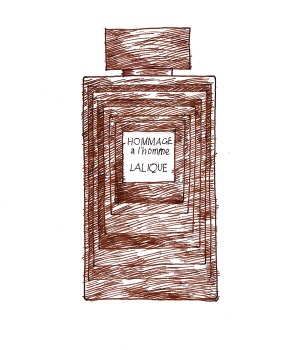Tagged With ‘burnt’
Comme des Garçons
Avignon
12 July, 2015
 Not everyone wants to smell like a Catholic cathedral in the middle of Midnight Mass, but I do. Maybe it’s because I’m not Catholic, but incense’s associations, for me, are less religious than architectural – and sensual too, since it’s one of those addictively overpowering fragrances that drive you slightly out of your mind (which of course was the original intention).
Not everyone wants to smell like a Catholic cathedral in the middle of Midnight Mass, but I do. Maybe it’s because I’m not Catholic, but incense’s associations, for me, are less religious than architectural – and sensual too, since it’s one of those addictively overpowering fragrances that drive you slightly out of your mind (which of course was the original intention).
The smell of incense is almost certainly among the oldest perfumes we have, with a history that stretches back as far as the word itself – the Latin ‘per fumum’ means ‘through smoke’. The word ‘incense’, meanwhile, derives from ‘incendere’, which also gives us ‘incendiary’ and ‘incinerator’.
Burning incense of one kind or another is common in many ancient cultures around the world, but the Catholic version began life in Africa and the Middle East. Lumps of incense have been found in the tombs of Ancient Egypt, and its main ingredients – frankincense and myrrh – still come from the Yemen, Oman and Somalia.
Recreating the burnt, resinous smell of incense in a perfume must be difficult, but in the last decade several perfumers have made the attempt, and Avignon, to my mind, is among the most convincing. It’s strong stuff, and not everyone will like it, but I love its almost narcotic intensity, with the pungent yet herbaceous smell of sun-burnt shrubs (especially cistus and santolina) on a rocky Greek mountainside. I don’t know if it’s simply the power of association, but I can even detect a hint of the slightly mouldy dampness that so many old churches smell of.
Launched in 2002, Avignon was created for Comme des Garçons by the brilliant French perfumer Bertrand Duchaufour, known for his long-standing association with L’Artisan Parfumeur. The name might seem a bit of a puzzle, until you remember that Avignon – now a beautiful if touristy walled town with tedious suburbs – was the seat of the papacy from 1309 to 1376, after the election of a French pope who refused to move to Rome. And ‘Avignon’ is surely a more evocative and intriguing name for a perfume than ‘Rome’. I, for one, am a willing convert.
Lalique
Hommage à l’homme
29 April, 2014
 Now here’s a tough one. Hommage à l’homme was the first perfume I reviewed whose London launch I attended and whose creator I met, but it’s also the first perfume I reviewed that I didn’t actually enjoy.
Now here’s a tough one. Hommage à l’homme was the first perfume I reviewed whose London launch I attended and whose creator I met, but it’s also the first perfume I reviewed that I didn’t actually enjoy.
On the whole I dislike knocking things, and generally I’d rather not mention fragrances that do nothing for me, but given the number of new launches each year there are bound to be some duds, so if I’m going to recommend scents that appeal to me it seems only honest to come clean about the ones that don’t.
Lalique has a long association with perfume, going back to 1908, when the ground-breaking French perfumer François Coty commissioned René Lalique to design perfume labels for him. Soon Lalique was designing perfume bottles too, and over the decades the company became known for its innovative techniques and the superb quality of its workmanship.
It wasn’t until 1992, though, that Lalique launched a perfume of its own, the imaginatively named Lalique de Lalique. There are now 19 Lalique perfumes to choose from, and Hommage de l’homme is the fourth to be marketed for men.
Hommage de l’homme marks two decades of perfume production, so you’d hope it’d be something special. My problem is that – to me at least – it smells totally generic, and not in a good way. Yes, I can vaguely smell the violets and saffron that we’re told it contains, but they’re completely overpowered by the same toxic chemical smell that spoils so many otherwise promising men’s fragrances.
Ever since I first recoiled from my first sniff of Dior’s Higher in 2001, every other mainstream men’s fragrance seems to have been stuffed full of the same noxious ingredient, which gets right up my nose. It has a harsh, acrid odour, like you get when your computer blows up – a burnt-plastic smell that I wouldn’t want in a toilet cleaner, never mind a perfume I might spray on my skin.
I’ve been puzzling what this secret component could be, if only so I could avoid it – could it be some kind of natural or synthetic extract of black pepper? Would someone like to tell me? Whatever it is, for me it’s a trend that, like Ugg boots, has long outlasted its welcome. Please, perfumers, move on.
PS: Finally someone has identified it: the much-appreciated Grooming Guru, Lee Kynaston – now we know!